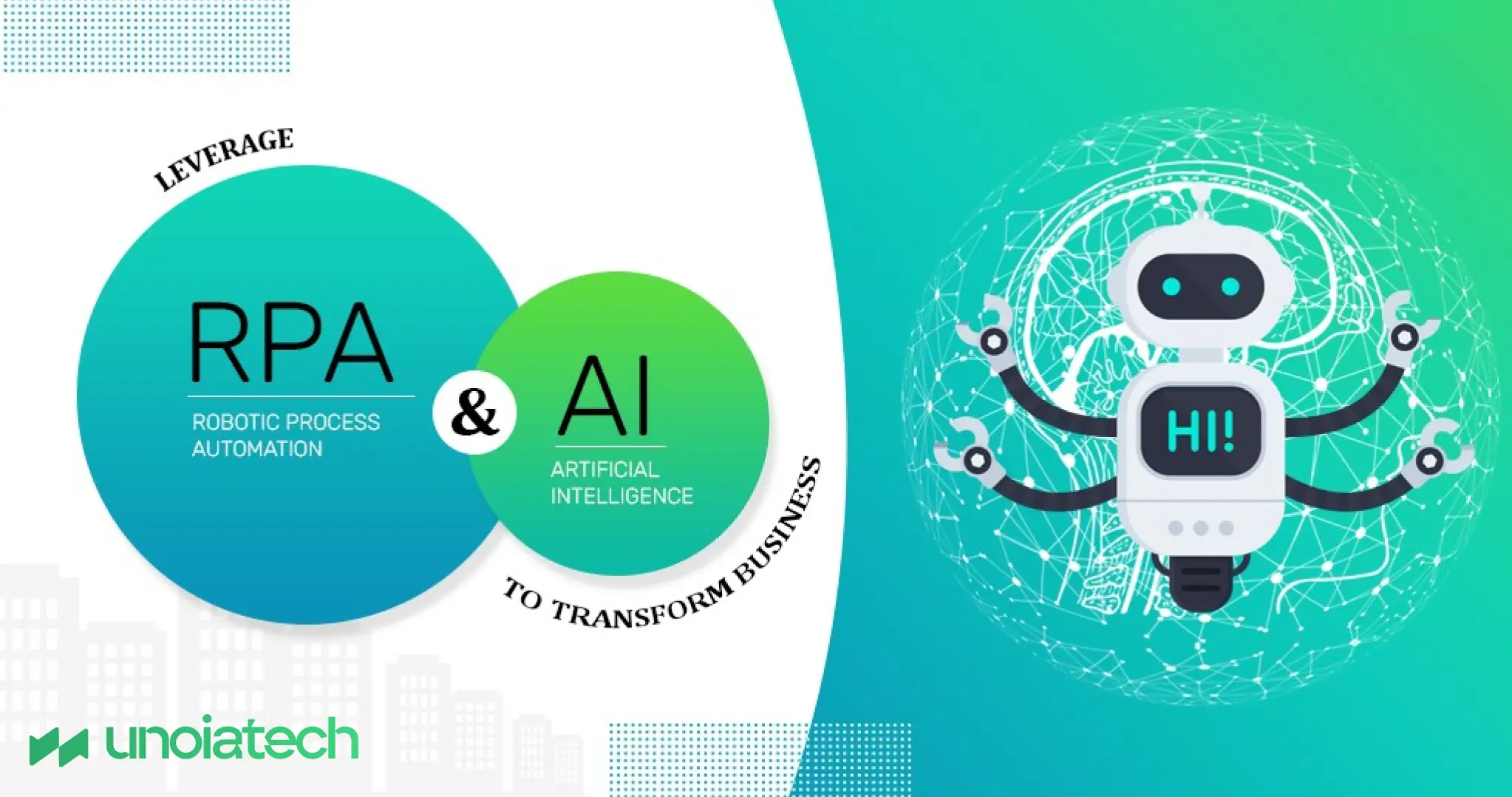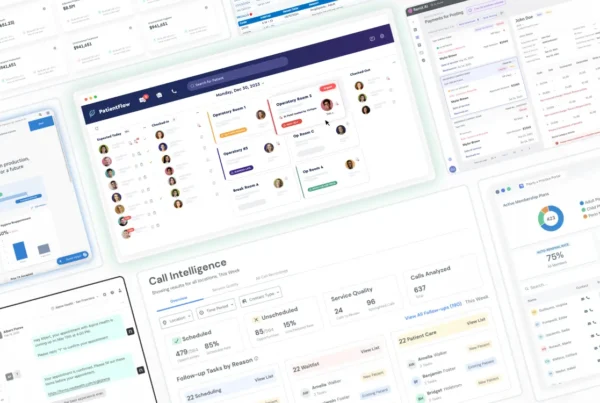
The digital transformation has significantly altered how businesses function, fostering innovation and enhancing efficiency across multiple areas. One of the most impacted domains is back-office management, where repetitive and labour-intensive tasks have historically hampered operational efficiency. In this context, the rise of artificial intelligence (AI) and robotic process automation (RPA) has proven to be a game-changer, providing solutions that boost productivity and streamline processes. This article will examine how AI and RPA are transforming back-office management by automating tasks, optimizing workflows, and cutting costs, ultimately enabling businesses to achieve sustainable growth and stay competitive in a fast-paced market.
Understanding AI & RPA
Technological advancements have equipped businesses with robust tools to enhance their operations and productivity. Among these tools, artificial intelligence (AI) and robotic process automation (RPA) stand out as influential solutions that are redefining back-office management. To grasp how AI and RPA are revolutionizing this space, let’s explore what these technologies involve and how they work in tandem.
Exploring Artificial Intelligence (AI)
Artificial intelligence (AI) refers to the capability of machines and software to imitate cognitive processes linked to human intelligence, such as problem-solving, learning, and decision-making. Utilizing advanced algorithms and techniques like machine learning, neural networks, and natural language processing, AI systems can analyze vast datasets, identify intricate patterns, and generate data-driven forecasts. AI technology finds application across various business sectors, including back-office management, where it enables intelligent automation, enhances data insights, and facilitates informed decision-making.
Demystifying Robotic Process Automation (RPA)
Robotic process automation (RPA) employs software robots, or bots, to carry out routine and standardized tasks within business workflows. These bots are programmed to mimic human actions, such as data entry, document handling, and form filling. Implementing RPA in back-office operations allows for the effective automation of manual, labor-intensive processes. Consequently, organizations can enhance operational efficiency, decrease error rates, and redirect human resources toward tasks that hold greater strategic significance. Furthermore, RPA’s scalability allows businesses to adjust their automation efforts according to varying workloads and demands.
The Synergy Between AI and RPA
Although AI and RPA are distinct technologies, they complement each other to create a powerful automation ecosystem. RPA is highly effective at performing rule-based tasks, while AI adds cognitive capabilities, enabling the management of tasks that require language comprehension, anomaly detection, and data-driven decision-making. By merging AI and RPA, organizations can establish intelligent automation frameworks that cover a broader range of back-office functions and facilitate complex decision-making. This integration paves the way for advanced automation, improving operational efficiency, enhancing customer experiences, and uncovering new business opportunities.
For instance, in finance and accounting, invoice processing involves matching invoices to purchase orders and obtaining approvals. RPA bots can automate these processes by directing invoices to the appropriate approvers, aligning them with orders, and identifying discrepancies, thereby boosting efficiency and minimizing errors.
In another example, customer support can benefit from RPA and AI integration. RPA bots can categorize and direct customer inquiries to the appropriate departments, while AI-powered chatbots offer real-time assistance and self-service options. This combined approach accelerates response times and enhances customer satisfaction.
How AI Enhances Back-Office Processes
AI Applications in Back-Office Functions
Artificial intelligence (AI) is transforming back-office functions by automating complex tasks and improving data-driven decision-making. Some key applications of AI in back-office operations include:
- Predictive Analytics: Using machine learning algorithms to analyze historical data, recognize trends, and forecast future outcomes.
- Natural Language Processing (NLP): Enabling automated assessment of textual data, conducting sentiment analysis, and facilitating language understanding for customer interactions and document management.
- Data Analysis and Pattern Recognition: Applying AI to examine large datasets, identify trends, and generate actionable insights for better decision-making.
Benefits of AI Integration in Back-Office Management
Integrating AI into back-office management offers several advantages to organizations:
- Increased Efficiency: AI-powered automation diminishes manual efforts, streamlines workflows, and accelerates task execution.
- Enhanced Accuracy: AI algorithms reduce human errors by delivering precise and consistent data analysis and processing.
- Data-Driven Decisions: AI-generated insights enable organizations to make informed decisions, optimize business strategies, and achieve favorable outcomes.
In summary, AI’s capability to automate intricate tasks, analyze extensive data, and support cognitive functions makes it a critical asset for streamlining back-office operations. By integrating AI technology, organizations can enhance overall efficiency, accuracy, and decision-making in their back-office management.
How RPA Boosts Operational Efficiency
Robotic process automation (RPA) is a powerful technology that automates repetitive, rule-based tasks in business processes. By utilizing software bots to replicate human actions, organizations can automate a variety of routine back-office functions, including:
- Invoice Processing and Data Entry: RPA bots can manage invoice data processing and entry, minimizing manual labor and improving data accuracy.
- HR Tasks: RPA effectively automates HR functions such as employee onboarding, payroll management, and benefits administration.
- Compliance Reporting: RPA assists organizations in meeting regulatory standards by automating the generation and submission of compliance reports.
Implementing RPA in back-office operations enhances operational efficiency and shortens turnaround times. By automating mundane and time-consuming tasks, RPA frees employees to concentrate on value-added activities that require human judgment and creativity. Additionally, RPA’s scalability ensures that organizations can readily adapt their automation strategies to changing business requirements and workloads, resulting in a more agile and responsive back-office function that supports overall organizational success and growth.
Synergies of Merging AI & RPA
The combination of artificial intelligence (AI) and robotic process automation (RPA) creates a powerful synergy for back-office management, enabling organizations to achieve higher levels of automation and efficiency. While RPA excels at automating repetitive, rule-based tasks, AI enhances cognitive capabilities for complex decision-making and data analysis. Together, AI and RPA form an intelligent automation ecosystem that addresses a wide range of back-office functions, from data entry to predictive analytics. This collaborative approach enhances the precision and consistency of back-office processes, enables rapid scalability, and reveals new avenues for innovation and growth. By leveraging the combined strengths of AI and RPA, organizations can transform their back-office operations, achieve operational excellence, and maintain a competitive advantage in the business landscape.
Challenges & Considerations for Implementing AI & RPA
When organizations consider adopting AI and RPA technologies in their back-office operations, they must address several challenges and considerations to ensure successful implementation and optimal outcomes:
- Process Identification: Businesses must carefully assess their current processes to identify suitable candidates for automation. Not every task may be ideal for AI or RPA, so it’s crucial to select processes that align with these technologies’ capabilities and deliver significant benefits.
- Data Privacy and Security: AI and RPA technologies often handle sensitive data. Organizations must prioritize data protection and security, enforce strong access controls, and ensure compliance with data protection regulations.
- Employee Training: Introducing AI and RPA may necessitate workforce training and upskilling. Companies should invest in educating their staff about these technologies, addressing any concerns, and promoting a culture of innovation and adaptability.
- Technology Selection: Choosing the right AI and RPA tools and platforms is essential. Organizations should evaluate various solutions’ functionality, scalability, and integration ease to select technologies that align with their business needs and objectives.
Implementing AI and RPA in back-office management presents exciting opportunities for increasing efficiency and driving growth. However, it requires careful planning and consideration of various factors. By proactively addressing challenges and adopting a strategic approach to implementation, organizations can unlock AI and RPA’s full potential to transform their back-office operations and achieve long-lasting success.
Conclusion
The transformative power of artificial intelligence (AI) and robotic process automation (RPA) is reshaping back-office management. By automating repetitive tasks, simplifying complex processes, and generating data-driven insights, AI and RPA technologies empower organizations to enhance operations and achieve sustainable growth. The integration of these technologies cultivates a culture of innovation, boosts agility, and enables businesses to respond effectively to shifting market dynamics. As organizations navigate the complexities of the digital age, embracing AI and RPA becomes a strategic imperative for unlocking new capabilities, driving operational excellence, and maintaining a competitive edge in an increasingly interconnected and dynamic business environment.
At Unoiatech & Company, we specialize in delivering scalable and customizable back-office solutions that harness the capabilities of AI and RPA technologies. Our team of experts collaborates closely with businesses to understand their unique requirements and provide tailored solutions that drive efficiency and support sustainable growth. Whether you aim to automate invoice processing, enhance customer support, or derive valuable data insights, Unoiatech & Company is your trusted partner in leveraging the full potential of AI and RPA to accelerate your business success.








